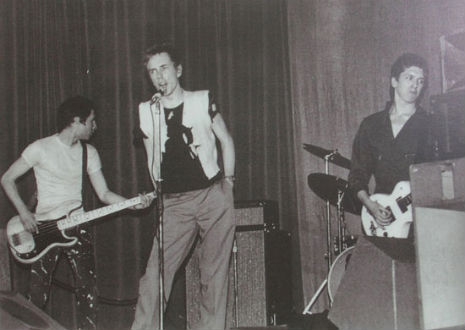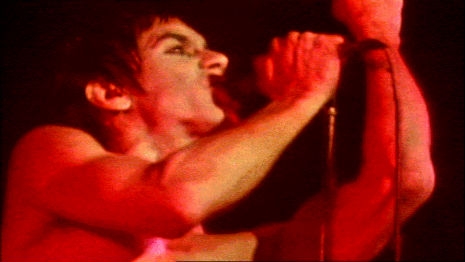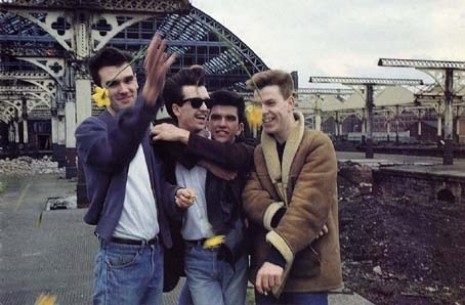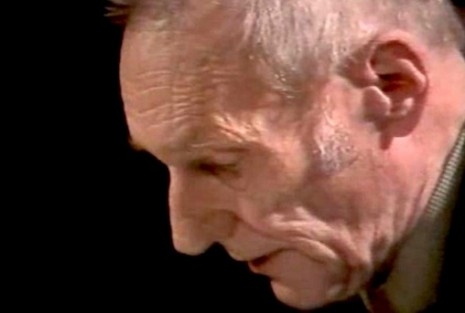
Tony Wilson was a multi-media Renaissance man, a co-founder of Factory Records, a TV reporter, journalist and host, and the man who helped make Manchester a city of cultural and musical importance during the seventies, eighties and nineties with such bands as Joy Division, New Order, A Certain Ratio, The Durutti Column and Happy Mondays. Wilson may have been Manchester’s “Mr. Music” but he was also known as the man who didn’t sign The Smiths.
Like all tales of regret and lost opportunity, there are multiple versions as to why Wilson didn’t sign “the ultimate Indie band,” and this is the one he gave to Ian Watson in 2003:
Watson: Did you ever try and sign The Smiths?
Wilson: “No. I was very close to The Smiths. I was very close to Morrissey. Morrissey was part of that little punk scene until 77 and there was a social whirl around a house called 35 Mayfield Road where Steven partially lived and where Linder lived, who was Howard Devoto’s girlfriend and also still today is Morrissey’s best friend. But I treated Steven, he was our genius writer. He was the speccy kid in the corner, the clever little swotty outsider boy, and very brilliant. My first contact with him was when he sent me as a schoolboy, a battered New York Dolls album sleeve and said ‘Dear Mr Wilson, why can’t there be more bands on television like this?’ so I knew him and I actually was encouraging his writing. He wrote a fantastic short play about eating toast and I think he gave it to me and I lost it.
“Then, at some point, whenever it was in 1980, he phoned me up and said would you come and see me. I drove out to King’s Road, Stretford, to his mum’s house, went to his bedroom upstairs and sat on the edge of the bed while he sat on the chair, surrounded by James Dean posters and he informed me that he’d decided to become a pop star. I sort of went ‘well Steven that’s very interesting’, and inside I was thinking ‘you must be fucking joking’. The least likely, you’re off your fucking head. Completely in my mind, absolutely, the least likely rock n roll star imaginable in the universe.
“So then obviously we were all part of a group of mutual friends and I can remember saying this same thing to Richard Boon, my mate who manages the Buzzcocks, and about four or five months later the two of us went to a gig in the Manhattan Club in Manchester. I think it was probably the Smiths’ first or second gig and as we walked out, I was blown away, it was fantastic, and he said ‘what do you think?’, and I said ‘I take it back completely, he’s amazing’.
“However, at that point in time Factory had gone through its wonder days of 78, 79 and we were now in late 1980 and into early 81. This is pre ‘Blue Monday’. We weren’t selling records, we were useless, we’d lost our plot and I was very depressed by the company. I had a band called Stockholm Monsters, I couldn’t sell Stockholm Monsters records and I thought fine and my honest approach was, I’m not going to saddle Steven with this pile of shit, with Factory when it’s shit. So I didn’t even pursue it. I said to him ‘I wouldn’t be any use to you’.
“That was my version of why I didn’t sign the Smiths. I know the Smiths have their version. Everyone has.”
Morrissey is not the kind of man to let a grievance go untended, and in his autobiography he relates how The Smiths had revenge on Wilson in 1986, when he asked the band to play on the bill of “Festival of the Tenth Summer” at the G-Mex in Manchester. This was a music festival to celebrate Manchester ten years after The Sex Pistols had played the city’s Lesser Free Trade Hall in June 1976. Having originally said “no” to playing the festival as the ticket prices were too high, Morrissey was swayed by a letter from Wilson urging The Smiths to take part, which they did.
In fact, the G-Mex event is a great day, and theatrician Wilson is at his best master of ceremonies scarf-flowing staginess. He calls everyone ‘dahling’, but it’s all a part of the public relations aspect of his showboat routine and not at all disingenuous. Before the Smiths go onstage, film-maker Derek Jarman is brought into the dressing room and is introduced. Johnny says ‘Hello,’ and then turns sideways to vomit. It is certainly a moment, but unfortunately it wasn’t caught on film.
Onstage, the Smiths are received as a life-giving source, and this begins to enrage Wilson so much that he flutters and fumes backstage, demanding to technicians that the Smiths’ power to be cut off. No backline crew will comply with Wilson, who is effectively gagged at his own festival. At the base of it all, general opinion assessed Wilson’s rage to be the blustering fury in realizing that the Smiths had meant more to the crowd than his nurtured proteges New Order. Suddenly Wilson’s divine right to be Mr. Manchester is scuppered, and he spends the remainder of his life with a Morrissey-Smiths wasting disease of the lower limbs, whilst oddly admitting that his big mistake in life was that he didn’t sign the Smiths to Factory.
Yes, well, there we go.
Back in the knife drawer, Miss Sharp.
Of course, history is always written by those who outlive their rivals, and Wilson sadly died in 2007, so we won’t hear his account of this supposed “blustering fury,” but so it goes.
Long before this, Wilson promoted as many bands as he was able through his show So It Goes and innumerable insert reports on Manchester’s evening news program. This then is Mr. Wilson dropping in on The Smiths as they rehearsed for a tour in 1985, during the week their second album Meat Is Murder went straight to number one in the UK album charts, and the band was voted “Group of the Year” in an NME poll. Wilson interviews drum & bass players Mike Joyce and Andy Rourke, before strumming a few questions with Johnny Marr, and then there’s a minor clash of egos with Morrissey, when Wilson asks him why he ever wanted to become a pop star in the first place?
Perhaps a similar question could have been asked of Mr. Wilson?


















